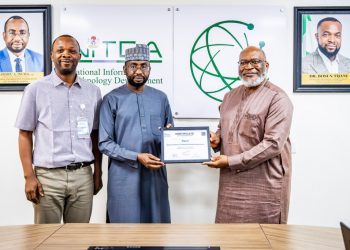Covid-19 brought about rapid digital disruption of delivery of educational content. The acceleration of digitalisation in education has created both threats and opportunities for developing economies such as those in the Middle East and Africa (MEA) region.
By way of positives, online access to education has brought world-class curricula from leading global institutions within reach of anyone anywhere.
This has allowed individuals with high-speed Internet access to become familiar with the structure and delivery style of academic courses around the world, preparing them not only for further tertiary education elsewhere but for workplaces in an increasingly globalised world.
The content and delivery made possible by digitalisation is preparing today’s workforce for tomorrow’s jobs and opportunities.
“This has brought about an education revolution for countries that have embraced digital delivery. The most motivated learners have been able to move much farther ahead, at their own pace, using resources outside the academic institution to further build their skills. The ability to own your educational path has created enormous up-side potential for the most talented. It has also allowed the most innovative institutions to rise in prominence,” says Murray de Villiers, EMEA Emerging, Education Head, SAS Institute.
“Unfortunately, the negative aspects of digitalisation revolve around access. For many learners in developing countries, lack of access to high-speed Internet hampers development and equality of opportunities. Industries are also changing faster than academia can adjust to disruption, which means that a gap is developing between elite institutions with the resources to keep pace and those that cannot,” adds de Villiers.
To bridge the gap, de Villiers says academic institutions need to work in partnership with governments and private sector organisations. “Academic institutions need to stay on top of technological advancements in business – and adopt some of those changes to processes themselves, for the improvement of the customer experience. The same accountability for delivery that traditionally featured in physical content delivery needs to apply to online delivery.”
SAS has more than 3000 education customers in 56 countries, helping institutions to anticipate the future and respond proactively to changing trends by harnessing data and analytics.
By moving beyond merely collecting and reporting data to applying sophisticated analytics, universities can achieve systemic improvements through deeper insights and improve student outcomes.
The onus is on business and technology innovators to provide the expertise to help with the necessary transformation. “SAS was founded in 1976 at the North Carolina State University by academics and researchers, so involvement with academia is in our DNA. The nature of work is changing, with the application of analytics capable of providing solutions to any question imaginable. We see it as part of our mission to grow the ecosystem of people capable of doing that work, so we make the content of more than 300 of our courses available to universities,” says de Villiers.
The reason SAS invests in the secondment of staff as well as educational content to academia is that universities struggle to keep up with industry developments and related theoretical advancements without direct input from organisations.
Graduates with expertise in an industry standard like SAS, as well as open-source skills, stand out in the competitive job market.
Digital credentials that validate expertise, augment and enhance degrees do carry significant weight with savvy employers seeking people who can get the job done.
Having artificial intelligence, big data, advanced analytics or data science credentials foster lucrative career opportunities across industries.
“We help train faculties to deliver the latest in technology, but this is done in a collaborative triangular approach that includes our customers. They, too, bring their top-tier research and professional talent to create practical experience programmes, technical experience programmes and professional networking,” de Villiers adds.
The last element – professional networking – is crucial and took a blow during the pandemic, says de Villiers. “Mentorship and career development are important in the development of professionals, not just the bearers of skills. When we expose young people to successful leaders in their career fields, we create a standard to emulate. This is what moulds the next generation of industry leaders across the world. It is the role of universities to ensure students have access to top experts and thought leaders. That is where their competitive edge will come from.”
The role of governments is to ensure that the fundamentals for a digitalised education sector are in place. “We need wider and more reliable access to high-speed Internet in non-urban areas. Some providers are delivering this type of connectivity via satellite, which comes with additional benefits for the economy beyond education. Along with connectivity, governments need to put in place policies for the market that support the creation and deployment of high-tech solutions to social problems,” de Villiers says.
It is only when all three participants in the triple helix – academic institutions, organisations and government – act in concert that social value is created and sustained.










